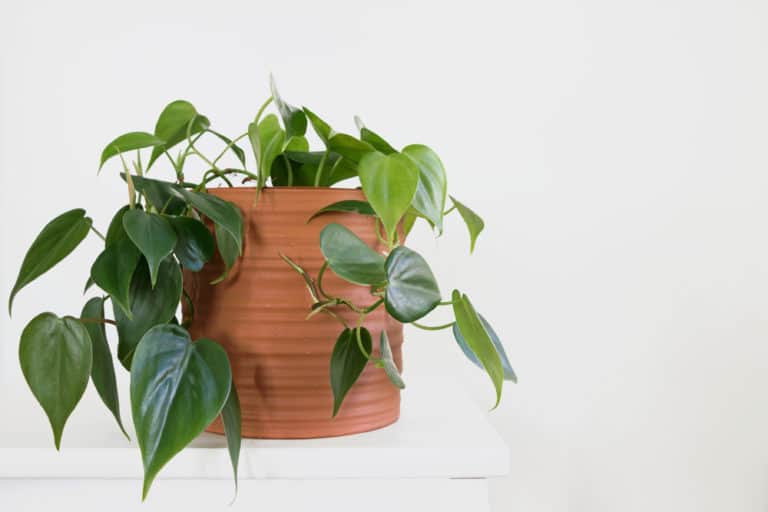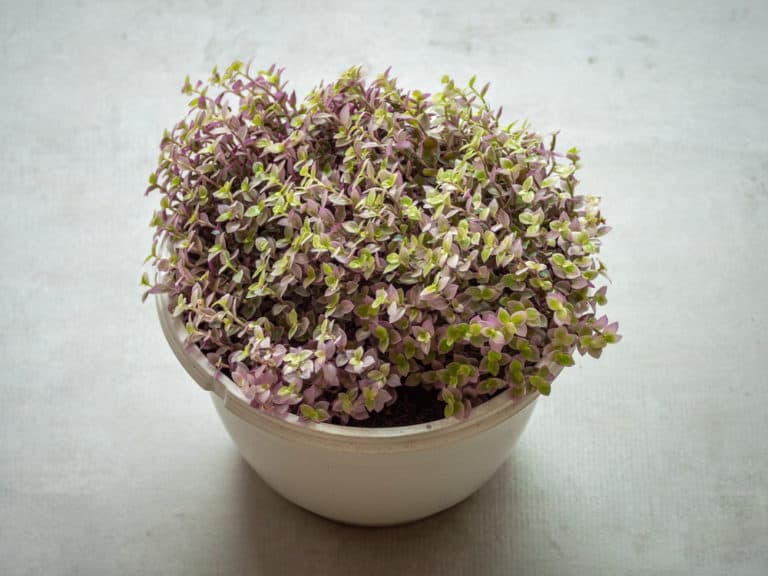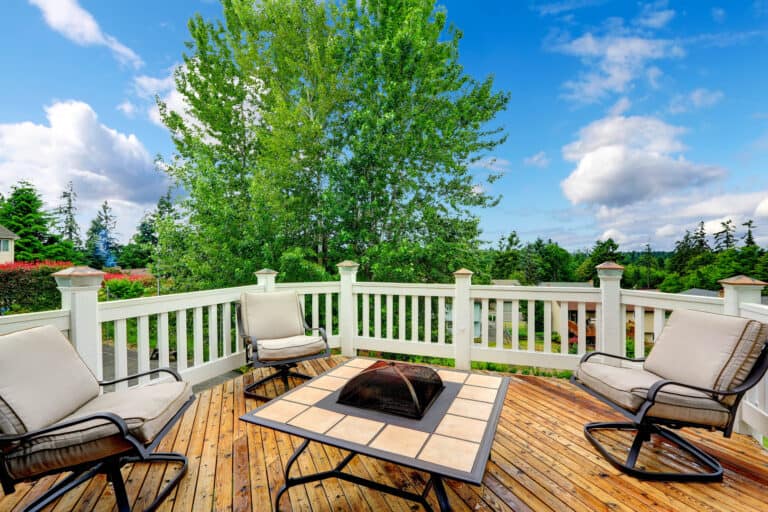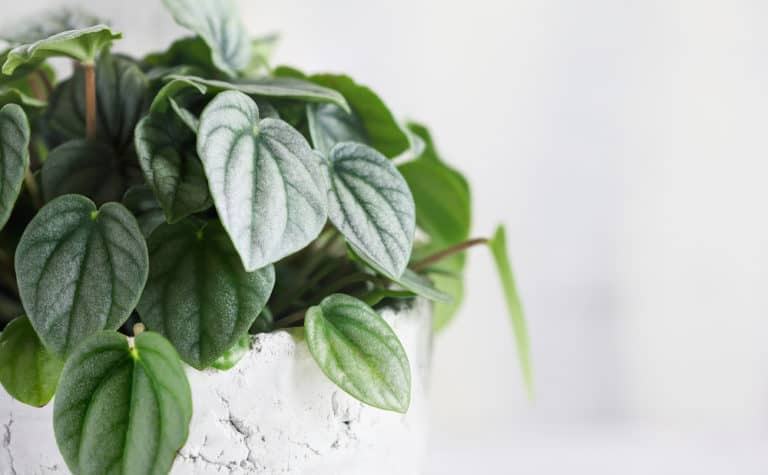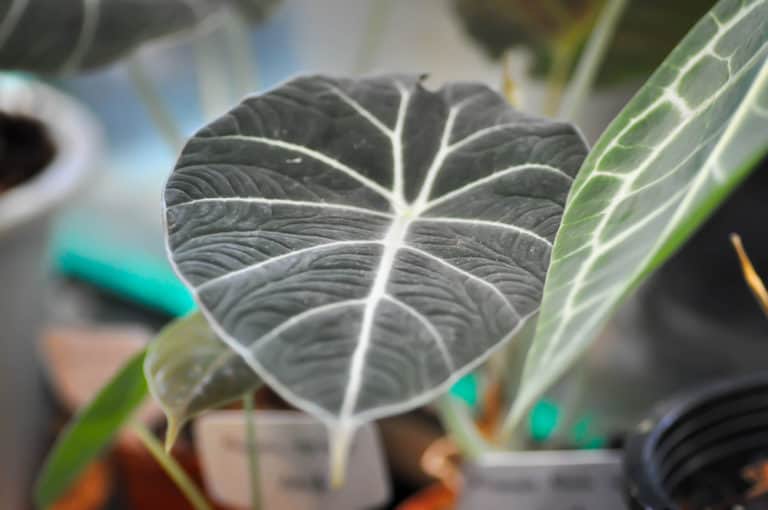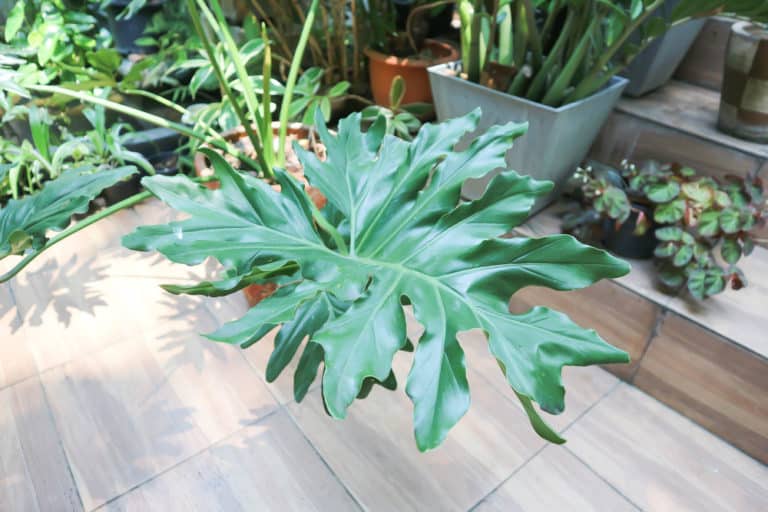Syngonium Podophyllum ‘Albo Variegatum’ Care Guide (2024)
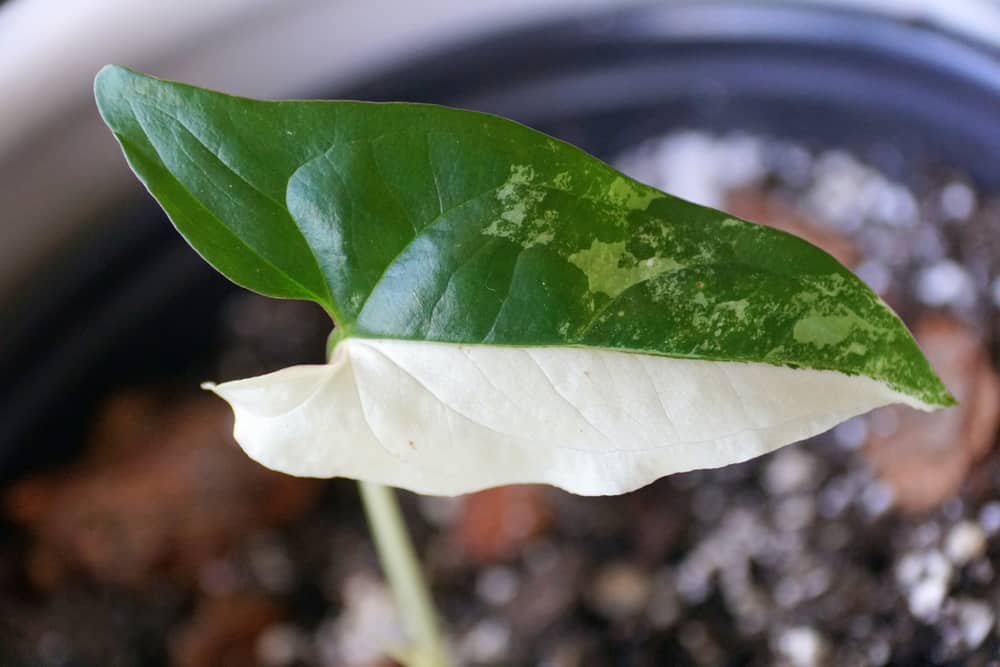
Syngonium Albo is a vining plant with beautifully variegated leaves.
Because it’s so easy to grow, Syngonium podophyllum Albo Variegatum is very popular as a houseplant.
In fact, even if you live in a tropical zone, it spreads so easily that you will want to keep it in a pot!
| Scientific Name | Syngonium podophyllum ‘Albo Variegatum’ |
| Common Name | Arrowhead Plant, Arrowhead Ivy |
| Light | Bright indirect sunlight |
| Watering | Water if the top inch of soil is dry |
| Temperature | 60 to 80°F (15 to 26°C) |
| Hardiness Zone | 9a, 9b, 10a, 10, 11 |
| Humidity | 50 to 60% |
| Soil Type | Rich, quick-draining, loamy |
| Soil pH | 5.5 to 6.5 (mildly acidic) |
| Fertilizing | A balanced feed once a month in spring and summer |
| Repotting | Every 2 years |
| Pruning | Summer |
| Propagation | Root in water |
| Toxicity | Toxic to humans and pets |
| Mature Size | 6 feet as a houseplant |
| Bloom Time | Rarely blooms indoors |
What’s Unique About Syngonium Albo?
The Syngonium Albo plant is native to the tropical rainforests of Central and South America, where it climbs the trunks of trees that form the canopy.
Syngonium Albo plants are prized by indoor growers for their beautifully variegated leaves. They have generous splashes of white against a bright green background.
As well, growing Syngonium Albo is easy, even for someone who’s never grown a houseplant before.
Syngonium Albo is also a useful plant to grow indoors. It has been proven by NASA that it filters chemicals such as benzene, formaldehyde, toluene, and xylene from the air.
So, not only does this tropical vine add a fresh, crisp look to your home, but it also makes it a healthier place to be.
Syngonium Albo Care
Since Syngonium Albo originates in the tropical rainforest, you should acquaint yourself with its native growing conditions to provide the best Syngonium Albo plant care.
While you can’t transform your home into that environment, your Syngonium Albo Variegatum care can give this tropical vine enough of its essentials to help it thrive.
Light
In its native habitat, Syngonium Albo grows in the shade of the towering trees that it entwines itself about. While some of the hot sun filters through, they are protected from the direct rays.
In your home, Syngonium Albo Variegatum light needs are similar. It needs bright, indirect light to maintain its variegation. That’s about 10,000 to 20,000 lux.
You can meet Syngonium Albo light requirements in most spaces without using grow lights.
A north or east window is a perfect spot, where the less intense morning sun will not damage the leaves.
However, in a south or west-facing room you will need to find a spot out of the full sun.
Watering
Rainforests tend to have a steady supply of water, but loose, porous soil, so Syngonium Albo’s watering needs are for soil that is always slightly moist but never soaked.
The best Syngonium Albo watering technique is to never let the soil dry out, but to keep it always just a little moist.
It’s like the difference between a dripping wet sponge and one that’s been wrung out so it’s just damp.
Water Syngonium Albo Variegatum whenever the top inch of the soil has dried out, but don’t flood the pot.
Instead, gently pour water over the surface until water starts to dribble out of the drainage holes.
Temperature
The Syngonium Albo temperature range is between 60 to 80°F (15 to 26°C). It’s a tropical rainforest native that likes it hot.
Luckily, any space that’s warm enough for you will be a sufficient temperature for Syngonium Albo Variegatum.
However, it has a limited temperature tolerance below that level, and anything below 54°F (12°C) can seriously damage your plant.
Avoid drafts and air conditioner vents, and in really cold winter weather they should not be right next to window glass.
In the summer months, you can move it outside to give it some really hot, humid conditions.
Of course, this tender tropical perennial has no frost hardiness. Freezing weather will kill it.
Humidity
The ideal humidity for Syngonium Albo Variegatum is between 50 to 60%.
However, Syngonium Albo humidity requirements are not that demanding. You can usually maintain indoor humidity at 35% or more and keep your Syngonium Albo content.
Still, if you notice that the leaves are getting brown tips, or if you want your Syngonium Albo to produce bigger and healthier leaves, you can raise the humidity level.
Try gently misting the foliage a few times a week.
You can also place the pot on a pebble tray filled with water.
However, the best way to boost humidity for all your plants is to invest in a small humidifier to set in the middle of your tropical garden.
Soil
Syngonium Albo soil should be porous and well-draining, while at the same time retaining a moderate amount of moisture.
Its roots need water, but also air to keep them healthy.
The pH level for Syngonium Albo Variegatum soil is 5.5 to 6.5, or mildly acidic.
You can buy a commercial aroid soil for Syngonium Albo Variegatum, which is ready to use without any amendments.
However, you can also make your own soil mix. Mix together equal parts peat moss and perlite, and throw in a good handful of compost to add some nutrients.
You can also use a mix of standard potting soil with equal quantities of perlite and orchid bark.
Fertilizer
Using a fertilizer for Syngonium Albo Variegatum will encourage strong, healthy growth and the most beautiful leaves.
If you added compost or slow-release granules to your potting mix, that should be enough to keep your Syngonium Albo happy for a full growing season.
Otherwise, use a liquid formulation with a balanced fertilizer ratio of 10-10-10 as your Syngonium Albo fertilizer.
Use it once a month in the spring and summer.
Dilute it to half the recommended strength and pour it slowly and evenly over the soil surface.
Do this right after you’ve watered your Syngonium Albo to ensure even absorption.
Potting & Repotting
Even if your Syngonium Albo has reached its full size and doesn’t need a bigger pot, repotting Syngonium Albo Variegatum will let you refresh the soil.
Syngonium Albo repotting should be done every couple of years, or when you see signs that it’s becoming rootbound.
Roots may be visible growing out of the drainage holes, or water may run right through when you try watering.
Move up only one pot size, or 2 inches at most. An unglazed clay pot will let excess water transpire through the sides. Ensure that it’s got good drainage holes.
Always use fresh potting soil to avoid the build-up of disease.
Pruning
The best time for Syngonium Albo pruning is in the spring or summer, during its growing season.
Cutting Syngonium Albo Variegatum may be done to encourage bushier lateral growth, or to keep this vine to a shorter length.
To get a bushier vine, pinch off stems growing too long above 6 or 7 leaves, just above a node. This will encourage new stems to develop from there.
As with any evergreen perennial, some leaves will die or get damaged. You can trim them off at any time in the year. They detract from the appearance and can harbor disease or pests.
Propagation
The easiest method of Syngonium Albo propagation is with stem cuttings. Even a beginner grower will be able to create lots of new plants.
Propagation should be done in spring or summer during the period of active growth.
To propagate Syngonium Albo Variegatum using stem cuttings, select healthy stems with at least 3 nodes and a leaf. Cut them close to the soil surface.
You can put the cuttings in either a jar of water, or in a soil medium that you keep consistently moist.
Set your cuttings in a warm, humid spot with bright, indirect light.
Within a month, you should have baby Syngonium Albo plants ready to pot up.
Common Problems of Syngonium Albo
There are not many Syngonium Albo problems to worry about.
In fact, most problems with Syngonium Albo Variegatum can be prevented by just giving your Syngonium Albo the growing conditions it needs.
However, if you start to see the leaves drooping, yellowing, or getting damaged, it’s time to find out how to help it.
Pests
The most likely Syngonium Albo pests are the same bugs that target most indoor plants.
You can prevent most Syngonium Albo Variegatum pests by using an organic insecticide like neem oil or insecticidal soap every month.
Either wipe down the leaves with a damp cloth or spray the solution over the foliage.
If you see small raised yellow bumps, your plant has spider mites. They also spin webs. A good rinse in the shower will get rid of them.
Aphids are small green bugs on the underside of the leaves. Use a hand vacuum to suck them up.
Mealy bugs look like little white puffs under the leaves. Wipe them away with a cotton ball dipped in rubbing alcohol.
Scale resembles small brown bumps on the stems and leaves. Scrape them off.
Diseases
Most Syngonium Albo diseases are bacterial or fungal and made more likely by overly wet soil or foliage.
As long as you catch the disease early, you should be able to save your Syngonium Albo Variegatum.
Erwinia bacteria causes bacterial blight and stem rot.
You will observe dark green circles on the leaves, and a foul odor. If it is far advanced you should throw the plant out, but if it’s just started, cut off all infected leaves and move it away from other plants to see if it can recover.
Myrothecium leaf spot is a fungal infection that causes brown spots with concentric rings. Cut off affected leaves and spray with a fungicide.
Growing Problems
Not all growing problems are caused by a disease. Sometimes you have a sick plant because it is growing under unsuitable conditions.
Improving its environment and treatment can let it thrive again.
If leaves are drooping and turning yellow, you’re probably keeping its soil too wet. Repot it in fresh, porous soil.
If the tips of the leaves are brown, you need to increase the humidity around your Syngonium Albo.
If the new leaves are reverting back to plain green without any white variegation, move it to a brighter spot where it will get more light. Cut off the green leaves to encourage the growth of new variegated ones.
Toxicity of Syngonium Albo
Syngonium Albo Variegatum is toxic to humans and all animals.
All parts of the plant, including the leaves and sap, contain calcium oxalate crystals, which will pierce delicate tissues and can cause severe pain.
Its toxicity requires some special considerations when it is grown in homes with children and pets.
For Humans
Syngonium Albo is toxic to humans.
While it is rarely life-threatening, children are more at risk than adults because they are more likely to try eating some of the foliage.
It doesn’t taste good, so they will probably spit it out, but even that can cause localized pain around their mouth.
Clean all plant matter off, and give them a cool treat like a popsicle to soothe the pain.
However, if you observe that their tongue is swollen, or that they are having trouble breathing, take them to the emergency room.
If you get some of the sap on your skin, rinse it off, as it can cause a rash.
For Pets
Syngonium Albo is toxic to pets, and they can end up with permanent organ damage without treatment.
If your dog, cat, or rabbit has nibbled at your Syngonium Albo, and is wheezing, drooling excessively, or vomiting, do not try to treat the symptoms yourself.
Instead, take your pet to the veterinarian immediately.
Luckily, you can safely keep your Syngonium Albo in a home with small creatures.
It’s perfect for growing in a hanging basket, well out of reach of little ones.
You can also train it up a pole set on a shelf above their reach, and then let it ramble along a high shelf or cupboard.
Syngonium Albo Appearance
The main appeal of the Syngonium Albo appearance is its fresh, bright leaves in shades of white and green.
Its vining habit lends itself to a variety of uses in the home.
While you will probably never see a Syngonium Albo Variegatum flower on your potted plant, you will have an evergreen display of variegated leaves.
Foliage
The foliage of Syngonium Albo is evergreen, so the leaves remain on the vines year-round.
A leaf on a juvenile plant grown indoors in a pot will reach between 3 and 5 inches long, in a distinct arrowhead shape.
The bright green leaves have random splashes of white, for a fresh, modern look. They grow at the tips of pinkish petioles.
When a Syngonium Albo plant is grown outdoors in a tropical region, it takes on its mature form.
Leaves can get as long as 14 inches, and the shape changes to a 5-lobed form. They also turn solid green.
Flowering
Blooming only occurs on mature Syngonium Albo vines grown outdoors in tropical climates. This makes the likelihood that a plant in your home will flower very rare indeed.
Juvenile plants grown indoors do not reach a sufficient size to trigger flowering. It will not occur until the leaves take on their mature form.
The flowers are green and white and look similar to a Peace Lily. They set small black, brown, or red berries. There’s no fragrance associated with the flowers.
You may not ever see your Syngonium Albo flowering, but its foliage is so attractive you really won’t miss it.
Size and Growth
When grown indoors, you can expect the final size of Syngonium Albo to be between 5 and 7 feet, with about a 2 foot width.
It has a fairly rapid growth rate.
Syngonium Albo will grow best when trained up a sphagnum moss pole, or allowed to trail from a high perch or hanging basket.
Outdoors in a tropical climate, a mature Syngonium Albo vine can top out at 65 feet as it climbs along the limbs of tall trees.
However, Syngonium Albo has a reputation as an invasive weed in places where it is not native, such as Florida.
Syngonium Albo Fragrance
There is no Syngonium Albo fragrance.
Even the extremely rare Syngonium Albo flowers have no scent, and the foliage is similarly fragrance-free.
That is not to say that Syngonium Albo cannot have a positive impact on your indoor air quality.
Since it is known to filter harmful chemicals from the air, growing a Syngonium Albo will give you a healthier indoor environment.
As well, if you have a sensitivity to fragrance, a scentless plant is a good choice for your home, especially if you live in cramped quarters.
You can always add scented plants such as geraniums to your indoor garden, while still enjoying Syngonium Albo’s lovely foliage.
Suggested Uses for Syngonium Albo
Syngonium Albo is an excellent low-maintenance houseplant that can fit into even a small space indoors.
Hang a planter in the corner of your bedroom and let it filter your air as you sleep.
In a small studio apartment, you can train the vine up a pole to add a tropical feel while taking up hardly any room.
Move a hanging planter out to your balcony or patio in hot weather for easy, bright addition to your summer tropical oasis.
In tropical climates, it’s advisable to grow your Syngonium Albo in a container outdoors, as it can become quite invasive when planted in the ground.
FAQ
What is Syngonium Albo?
Syngonium Albo is an evergreen perennial vine that is native to the rainforests of Central and South America. It is usually grown as a houseplant.
How to identify Syngonium Albo?
Syngonium Albo has leaves shaped like arrowheads, with bright green and white variegation. It is a vining plant that can climb a pole or trail from a planter.
How to care for Syngonium Albo?
Syngonium Albo should be kept in bright, indirect light, in porous, well-draining soil that is consistently moist, in warm temperatures, and with moderately high humidity.
How to grow Syngonium Albo indoors?
Syngonium Albo can be grown as a potted plant in either a hanging basket and allowed to trail, or trained up a pole to climb.
How to grow Syngonium Albo outdoors?
Syngonium Albo can be grown outdoors year-round in tropical and subtropical zones. However, it can become invasive if not grown in a container to restrict its spread.
How fast does Syngonium Albo grow?
Syngonium Albo has a fairly rapid growth rate, and can grow several feet in one growing season under the right conditions, reaching its full length in just a few years.
How tall does Syngonium Albo grow?
Syngonium Albo can grow to 5 to 7 feet when grown indoors, with a spread of 2 feet. Outdoors in a tropical zone, a mature vine can be 65 feet.
How to make Syngonium Albo grow faster?
Syngonium Albo will grow its fastest with hot temperatures, high humidity, regular watering and fertilization while kept in bright light out of the full sun.
How to stake Syngonium Albo?
Syngonium Albo should be staked with a sphagnum moss pole to encourage upward growth and strong, healthy leaves, Its aerial roots grab onto the organic matter.
How to pot Syngonium Albo?
Syngonium Albo should be potted in rich, well-draining soil, in an unglazed clay pot with good drainage holes. Repot it every 2 years or so.
How to revive Syngonium Albo?
If your Syngonium Albo has completely dried out, you will have to submerge the pot in water until the soil has become fully saturated, and then let excess water drain away.
Why is my Syngonium Albo dying?
If your Syngonium Albo is sick, it may have a fungal or bacterial disease encouraged by too-wet conditions. Cut out the affected parts and replant in fresh soil.
Why is my Syngonium Albo drooping?
Your Syngonium Albo may be over or underwatered. Check the soil moisture and either give it a thorough watering or replant it in fresh, porous soil.
How cold can Syngonium Albo tolerate?
Syngonium Albo will grow well as low as 60°F (15°C), but at 54°F (12°C) permanent damage can occur, and freezing temperatures will kill it outright.
How to get rid of pests on Syngonium Albo?
Syngonium Albo pests need to be identified and then removed with the best method for each bug. Prevent their return with insecticidal sprays or by wiping down the leaves.
Is Syngonium Albo toxic to cats?
Yes, Syngonium Albo is toxic to cats. If your cat is vomiting or wheezing, take it to the veterinarian at once for treatment to prevent permanent organ damage.
Is Syngonium Albo toxic to dogs?
Yes, Syngonium Albo is toxic to dogs. If your dog is drooling excessively, wheezing, or vomiting, you need to get it to the vet as soon as possible.
Is Syngonium Albo toxic to children?
Yes, Syngonium Albo is toxic to children. If your child’s tongue swells up or they have difficulty breathing, take them to the emergency room immediately.
Is Syngonium Albo toxic to humans?
Yes, Syngonium Albo is toxic to humans. The sap contains calcium oxalate which can irritate the skin and cause a rash. Rinse it off with soap and water.
Does Syngonium Albo have a scent?
Neither the Syngonium Albo foliage nor its rare flowers have any discernible scent. It’s good for the homes of people with fragrance sensitivities or in public establishments.

